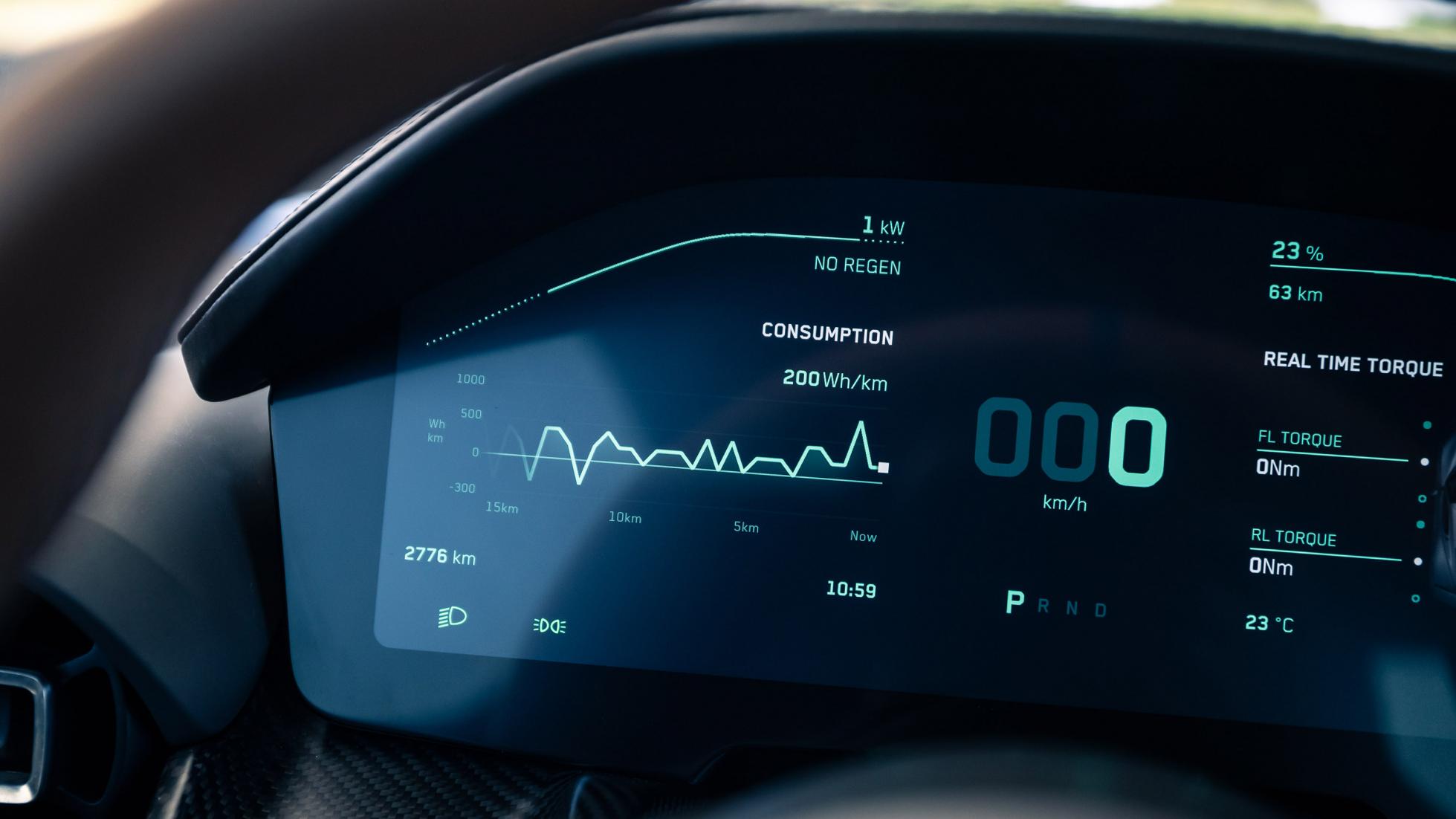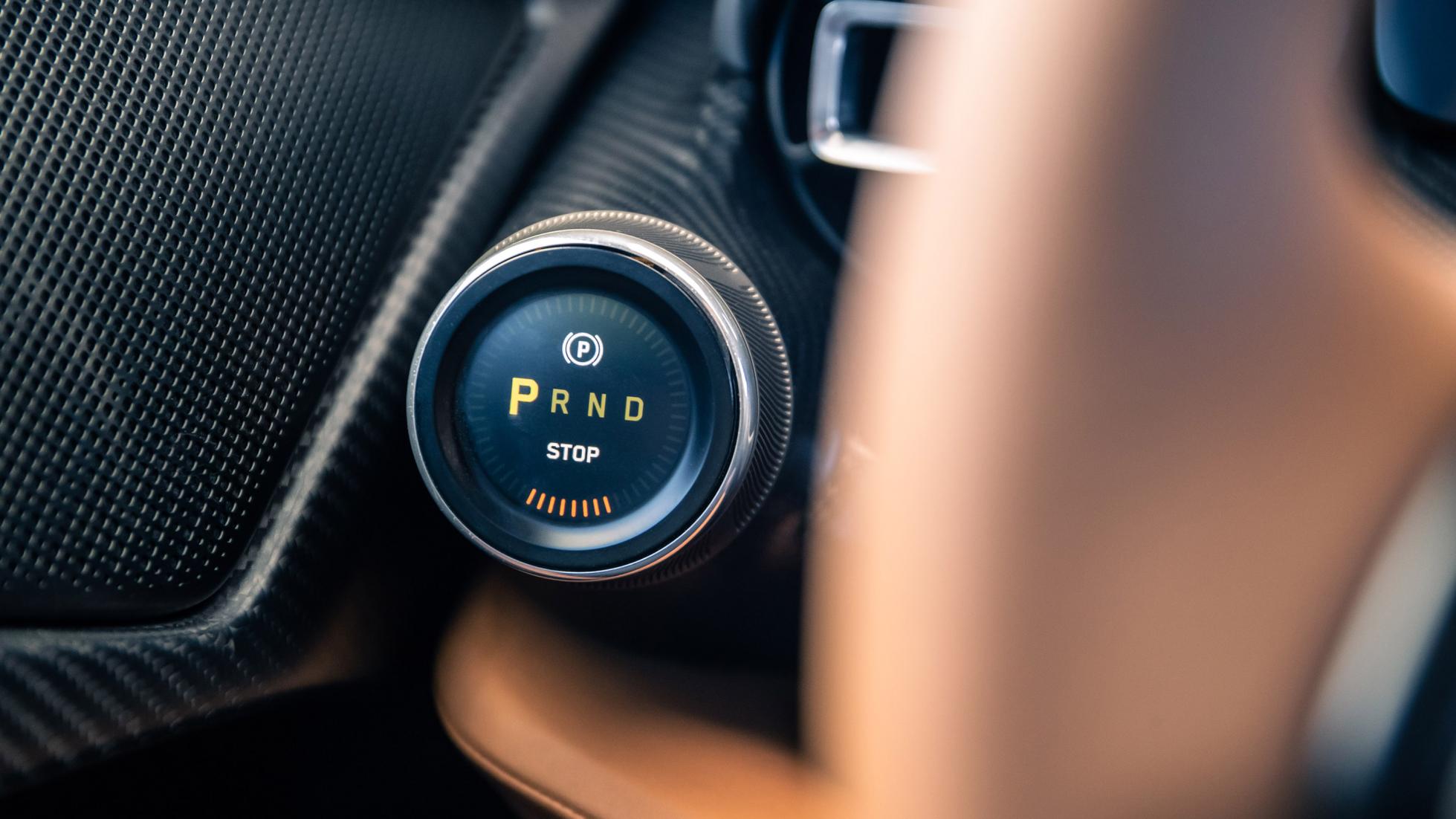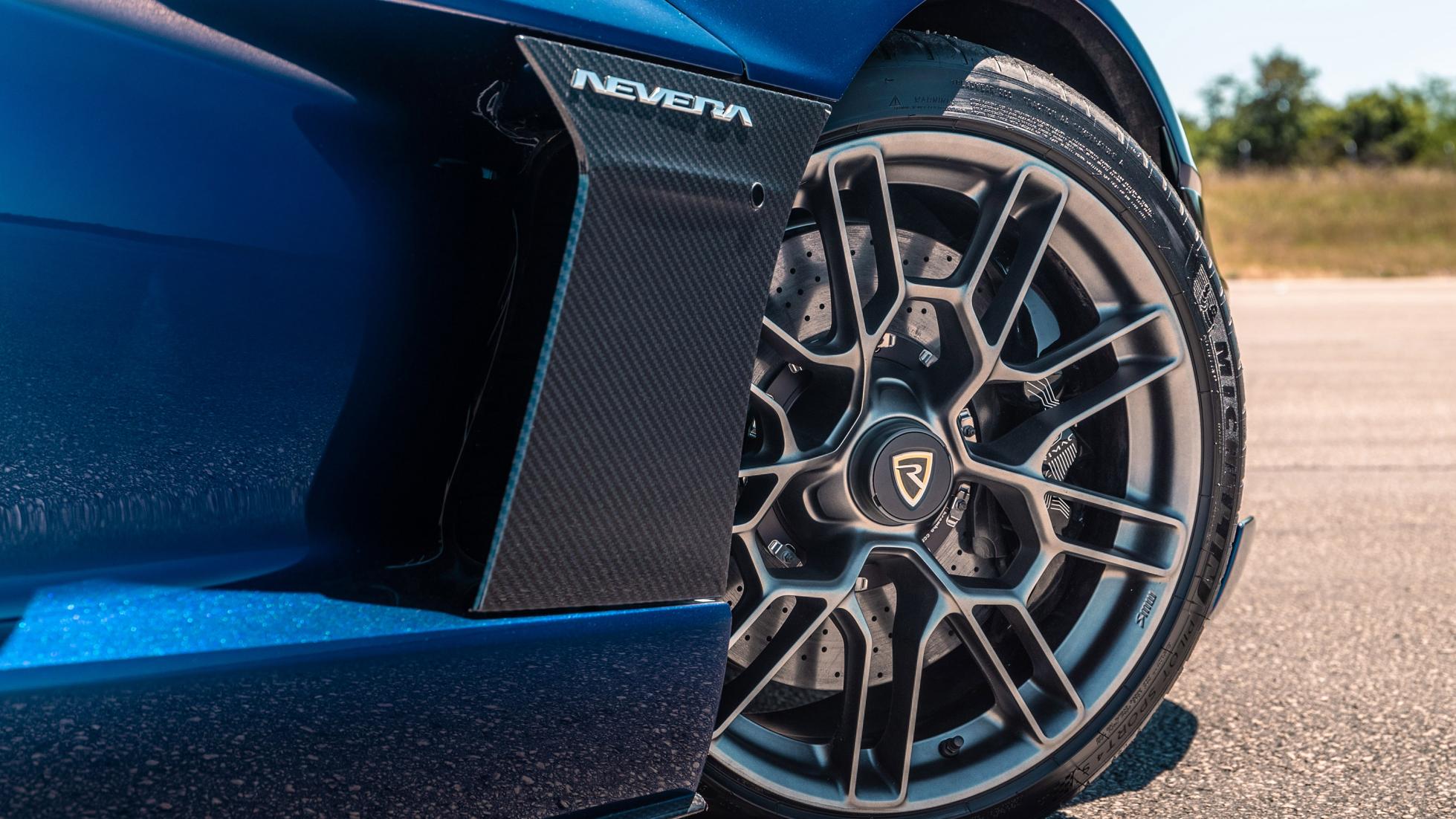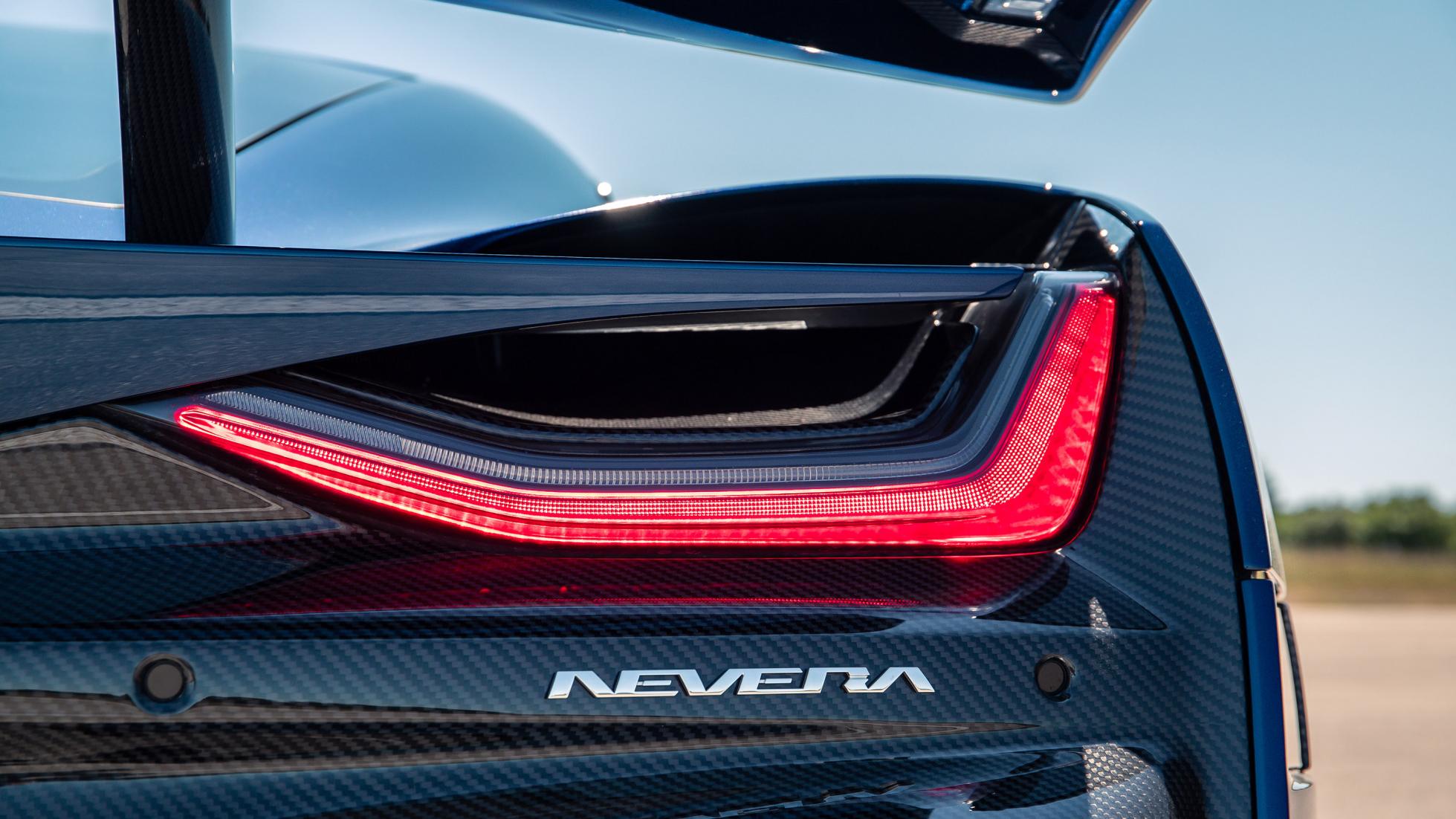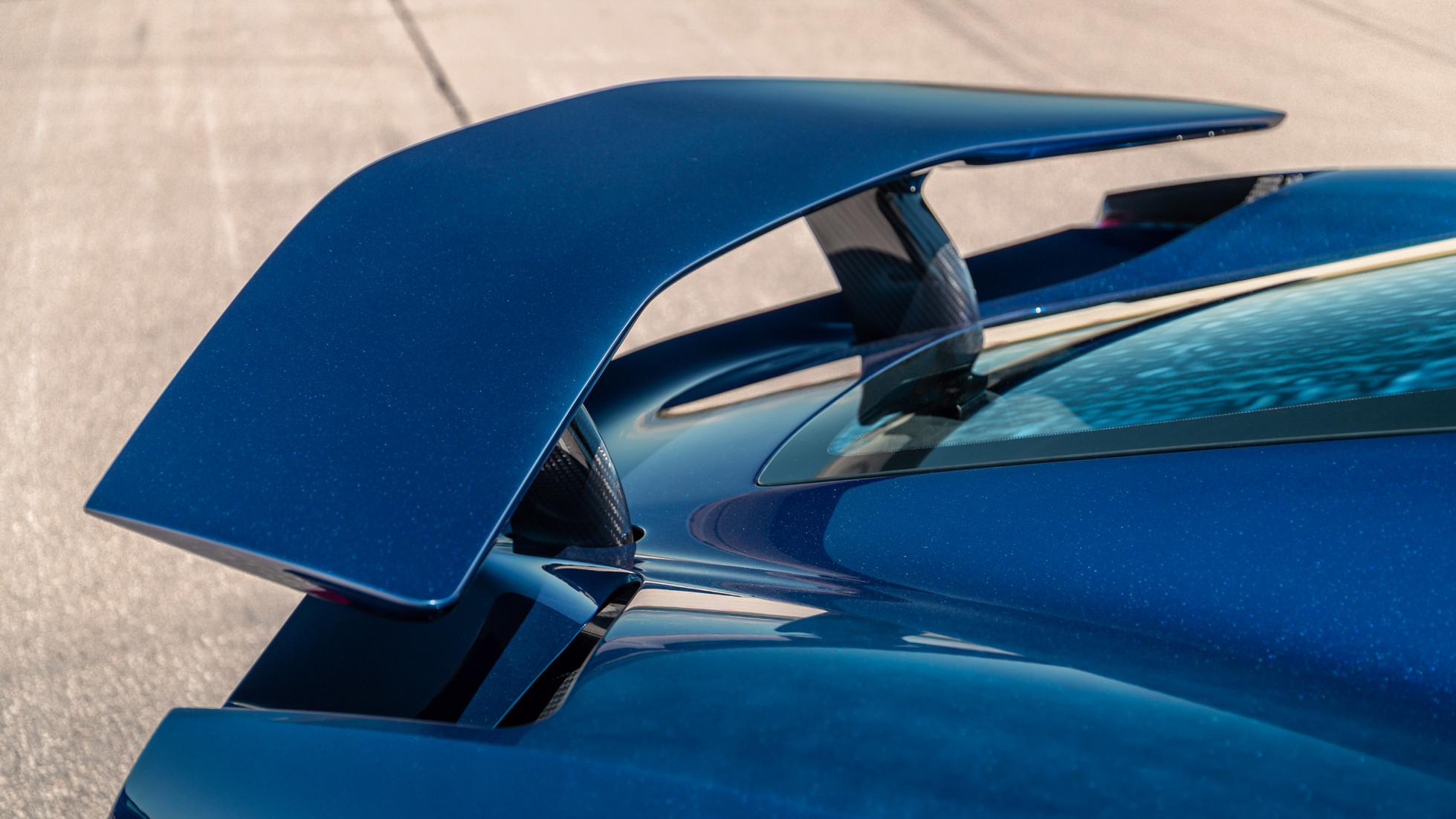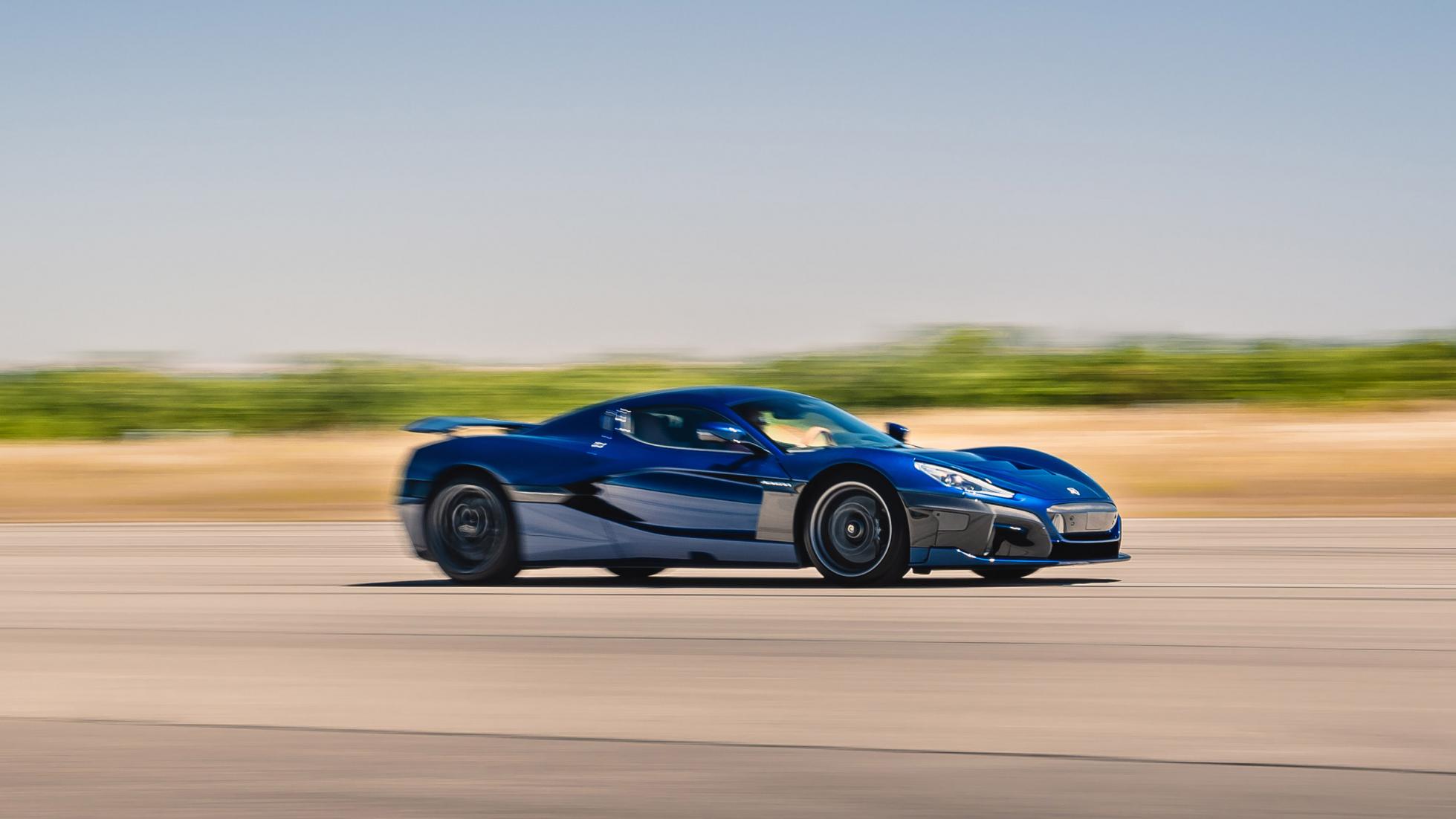Rimac Nevera review: a hypercar sensation
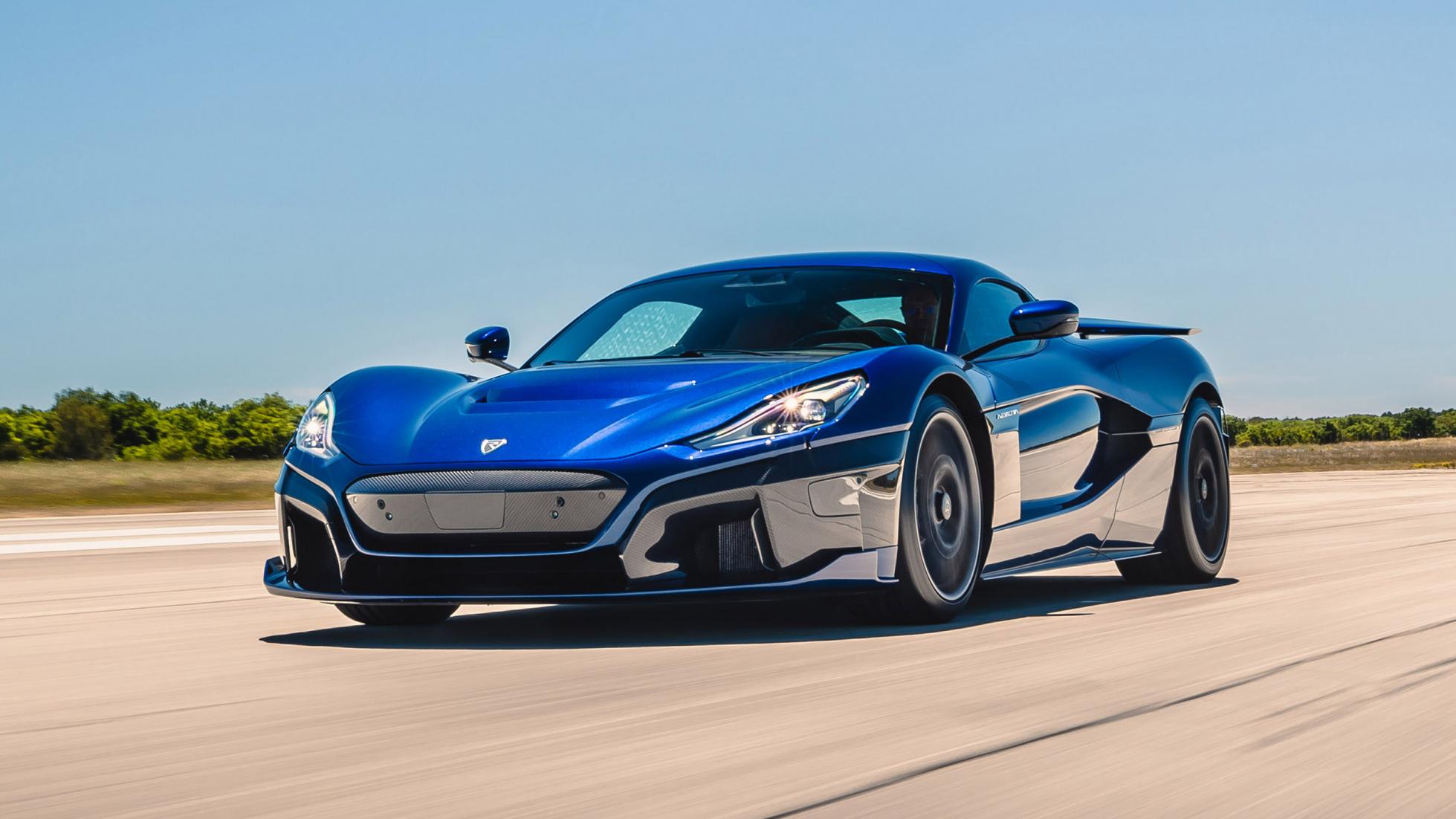
Words: Jason Barlow Photography: Johnny Fleetwood
OVERVIEW – What is it?
Google. Facebook. Amazon. One of the most fascinating things about the digital world in which we now live is that the tech titans which dominate it seemingly came out of nowhere, and not that long ago either. The old order got scrambled, fast.
Legacy automotive is doing its best as the electric revolution gathers serious momentum but from the land of Tesla – Nikola that is, not Elon Musk’s outfit – comes a company whose new car turns everything you thought you knew about hypercars on its head. Should you still be clinging to the notion that EVs are somehow missing something, prepare to be converted. Forever.
You’ll have heard of Croatian upstart Rimac, of course, and if you read TopGear.com regularly you’ll be acquainted with the company’s CEO and founder, Mate Rimac. As with the likes of Steve Jobs, Mark Zuckerberg, Jeff Bezos and yer man Musk, a certain cult of personality has grown up around Mate, partly because the internet likes that sort of thing, but mainly down to the fact that he has a brain the size of a planet and doesn’t stop until the ideas pinging around his head are made real.
In this case, the new Nevera, formerly known as the C_Two, and a machine that aims for the stratosphere despite hailing from a country with precisely zero indigenous car industry and a population of four million.
Let’s just run through the headline facts. Naming a car is always tricky and Nevera doesn’t entirely work in the English language, but a nevera is an electrically charged storm that whips up unexpectedly off the Mediterranean and can pummel the Croatian coast at speeds of up to 249kph. Appropriate, then, if somewhat more leisurely than its new four-wheeled namesake.
The car’s architecture encompasses a 6,960-cell, 120kWh Lithium/Manganese/Nickel battery pack in an H shape along the spine and behind the cockpit. There are four surface-mounted permanent magnet motors driving each wheel individually, the most advanced torque vectoring ever achieved and a power output equivalent to 1914bhp and 2359Nm of torque. (If it sounds similar to the Pininfarina Battista’s set-up, that’s because it is – Rimac supplies Pininfarina, amongst others, including Aston Martin, Ferrari, Hyundai, Koenigsegg and Porsche).
A pair of single-speed gearboxes are connected to the front and rear wheels. The Nevera has a range of 547 kilometres WLTP and hooked up to a 500 kW charger takes 19 minutes to go from zero to an 80 per cent state of charge.
Top speed is said to be 415kph, but Rimac’s chief test driver Miro Zrnčević admits to us that despite a highly rigorous test programme, they haven’t quite got there yet. What we do know is that it accelerates to 97kph in 1.85 seconds, 161kph in 4.3secs, and demolishes the quarter mile from a standing start in 8.6secs. Oh, and 299kph is dusted in 9.3 seconds, which makes the Nevera marginally faster than a contemporary F1 car. Consider that it weighs 2,150kg and you get some idea how utterly nuts the physics are here. It also makes you wonder how on earth that mass can be properly constrained, but we’ll come to that shortly.
Rimac plans to make 150 units with prices starting from £1.7m (RM9.7m). This is pretty punchy stuff from a guy whose first family home didn’t have running water or mains electricity, and whose initial foray into the business came when he fitted an EV powertrain into a rather shaggy E30 BMW 3 series. That was in 2008. When I interviewed him in early 2019 Rimac had 500 employees. Now there are 1,000, and the foundations will shortly be laid on a new 200,000 square-metre campus on the outskirts of Zagreb which will house 2,500 staff, with as much emphasis on education and healthcare as technology.
Rimac’s knowledge of batteries, inverters and e-motors is so advanced that the company develops and engineers virtually everything itself. It’s also because Mate Rimac is out-pacing everyone else. Clearly, this is where the big play is and what’s attracting the investors. Yet Mate is adamant that the Nevera isn’t just a pretty showcase for the company’s expertise. He’s absolutely committed to creating a hypercar that can take the fight to all the established big guns: in quality and execution as well as performance, and a big chunk of his new HQ is devoted to Nevera manufacture. To paraphrase Johnny Rotten, he means it, man.
And while there’s a certain familiarity to the Nevera’s form language, this ain’t no piece of exotic vapourware. Given the car’s vast performance potential, the shape is largely dictated by aerodynamic and cooling requirements, although it does still feature Rimac’s signature ‘cravat’ motif ahead of the rear wheelarch.
“The neck-tie has provided a symbol of Croatian strength and identity since the 17th century,” says the company’s design director, Adriano Mudri, although like everything it’s also functional: in this case acting as an air intake for the rear cooling systems.
The Nevera’s body – the diffusers, intakes, splitters and radiators – have been worked over tirelessly by an army of CFD experts to deliver a 34 per cent improvement in aero efficiency compared to early prototypes. The front bonnet profile, underbody flap, rear diffuser and rear wing can each move independently, and switching from a low drag mode to a high downforce setting has a profound effect: the latter increases downforce by 326 per cent.
Packaging all those batteries is no mean feat, so props to all involved for delivering such an elegant looking car. Rimac wanted something that was easy to use, with a decent H-point and above average-for-a-supercar-visibility.
Job done: the butterfly doors eat into the roof in a Ford GT-like manner and you don’t need to be a Soviet gymnast or Yoga master to get in and out. The view ahead is clear, the car easy to place on the road, rear visibility not bad. And when you pull those doors shut they close with the resounding finality of a cell door in a Belarussian detention centre. Watch the Nevera on the move and the more you appreciate the nuances of its shape.
DRIVING – What is it like on the road?
Let’s just explode a myth here: fast cars aren’t all about simply going fast. If that was the secret, the Rimac Nevera would be in at number one with a bullet on what old folks used to call the hit parade. But we’re just as interested in the how, why and what happens along the way as we are in the end result.
Except that the Nevera really is astonishingly fast. Fast in a way that’s tricky to put into words, either while you’re sitting in it trying to process what the hell is happening to your mind, body and soul when you nail the throttle, or a few days later writing about it. Fast in a way that doesn’t just squeeze the air from your lungs, it sends your eyeballs hurtling into the back of their sockets.
Sub three seconds to 97kph is the sort of fast that some people find rather discombobulating. Sub two would simply make the uninitiated weep. The Nevera is a highly emotional experience. It lays waste to the current hypercar hegemony.
Our drive culminated in a drag race at a small airport somewhere in Croatia, a runway being the only possible location to experience the sort of violent thrust the Nevera is capable of. Actually doing a launch start is dead easy: select Track mode on the dash mounted – and beautifully made – rotary controller nearest your right hand, hold your foot on the brake pedal for a few seconds, then release and stand on the accelerator pedal.
The next 10 or 15 seconds are simply vaporised. Time ceases to exist. It’s like a science experiment. Or perhaps a magic trick. Whatever it is, I have to do it twice just to be sure. Then a third time to double-check that what happened the first two times were for real.
The Nevera uses 77 separate ECUs and millions of lines of code are hustled around its body – mainframe? – in less time than you can think. I really have no idea how it all works. But what I can confirm is that off the runway and on ordinary roads the Nevera is equally convincing. This is obviously important. Drive it in one of its less aggressive modes and it does a very reasonable impression of, say, a Bentley Continental GT. It’s suspended on double wishbones all round with electronically controlled dampers and active ride height, so it’s tolerably comfortable at everyday speeds, if occasionally crashy over sudden surface imperfections and potholes.
The Nevera’s fully electric steering is pretty well calibrated and allows you to pour the car in and out of corners with one linear motion. It’s not overflowing with natural feel but then this is a dark art these days. There are seven different drive modes, Sport being the optimum if you’re after the most engaging everyday drive, by way of sharpened throttle, brakes, suspension, and steering.
Range is obviously more parsimonious with the energy, Track turns everything up to 11, Custom allows you to mix and match, while Drift basically sends all the torque to the rear axle if you want to kiss goodbye to your Michelin Pilot Sports. (I try that on the runway too, and it’s proof that someone at Rimac, probably Mate himself, has a strong sense of humour, but also that his software guys are mindbogglingly clever. The thing just dances.)
The secret sauce here, of course, is the torque vectoring, a fiendishly complex set-up that effectively turns the Nevera into five cars in one. This sort of approach could risk a form of schizophrenia, but the result here is a remarkable bandwidth. It’s called Rimac All-Wheel Torque Vectoring (R-AWTV 2) and effectively supplants regular ESP and traction control systems, working predictively and responsively to make 100 calculations per second.
On a twisty mountain road, the Nevera basically summons up the sort of wieldiness you’d find in, say, the the Porsche 911 Turbo, but punches out of a corner with the ferocity of something that has three times the Porsche’s horsepower (which it has). This hurricane force isn’t a surprise, but the agility, poise and its handling smarts are. It feels, oh, half a tonne lighter than it is, like a car with a low centre of gravity and optimum weight distribution (the battery pack weighs 700kg).
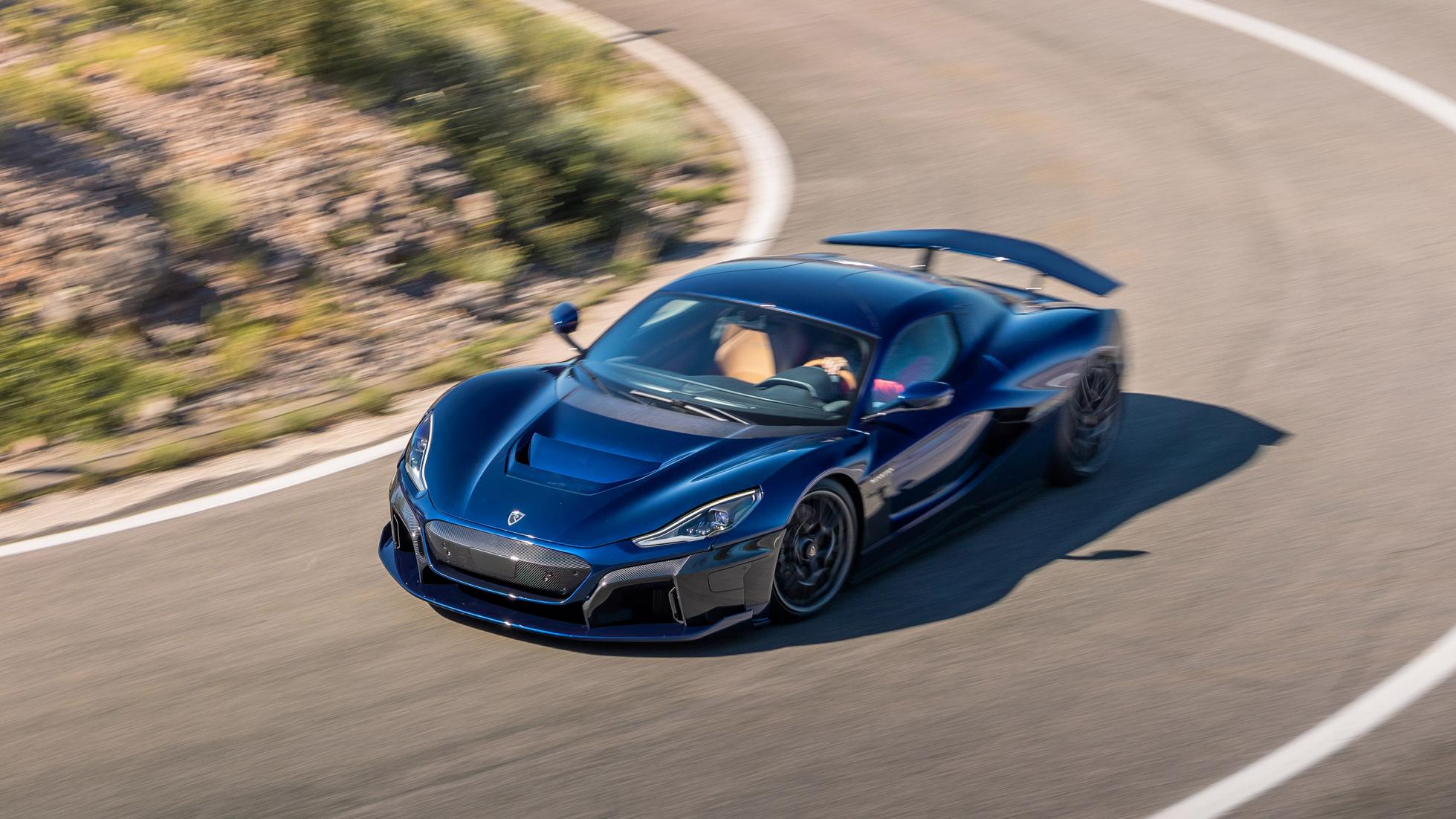
Miro and his team are still finessing the braking, but it’s clever stuff: an electro-hydraulic brake booster with a pedal feel simulator distributes braking force between the old-school friction brakes – 390mm Brembo carbon-ceramics front and rear – and the electric powertrain, depending on which is thermally optimal at that given moment. Another magic trick. Perhaps unsurprisingly, the Nevera offers the highest amount of regenerative braking of any EV currently on sale. It also means you can hustle along a twisty road in one-pedal mode, though the faster you go the bigger the leap of faith. There’s clearly still work to be done here blending the friction stoppers with the regen, but it’s not far off.
Then there’s the Nevera’s chassis, made entirely of carbon fibre – bonded roof, integrated battery housing and rear subframe – which gives it the torsional rigidity of an LMP car. In fact, Rimac claims it’s the most rigid road car ever made, and at 70,000 Nm/degree (approximately twice as stiff as the far-from-floppy and still brilliant Lamborghini Aventador), we wouldn’t dispute that.
There’s the odd creak and groan as a result – carbon fibre can generate unusal acoustic anomalies – but mostly you’re just aware of how phenomenally well-made and effective the Nevera is. Yes, the urge is there to reach for shift paddles, and the nature of the powertrain invariably removes a layer of interaction. It doesn’t sizzle like a V12. But as you can imagine, the availability of almost 2,000 expertly calibrated horsepower makes up for that. And actually it sounds really good, an authentic mix of whoosh, whir and sci-fi. Not so far from a Chiron, then.
Problems? The drive selector, another rotary selector sited to the left of the steering wheel, can be a little slow to respond as you move from P to D. They’re working on it. The driver’s seat and the central storage binnacle creak, so maybe Alcantara would be better than leather. The fact is that the Nevera’s structure is so stiff they’re still chasing NVH ghosts in the machine.
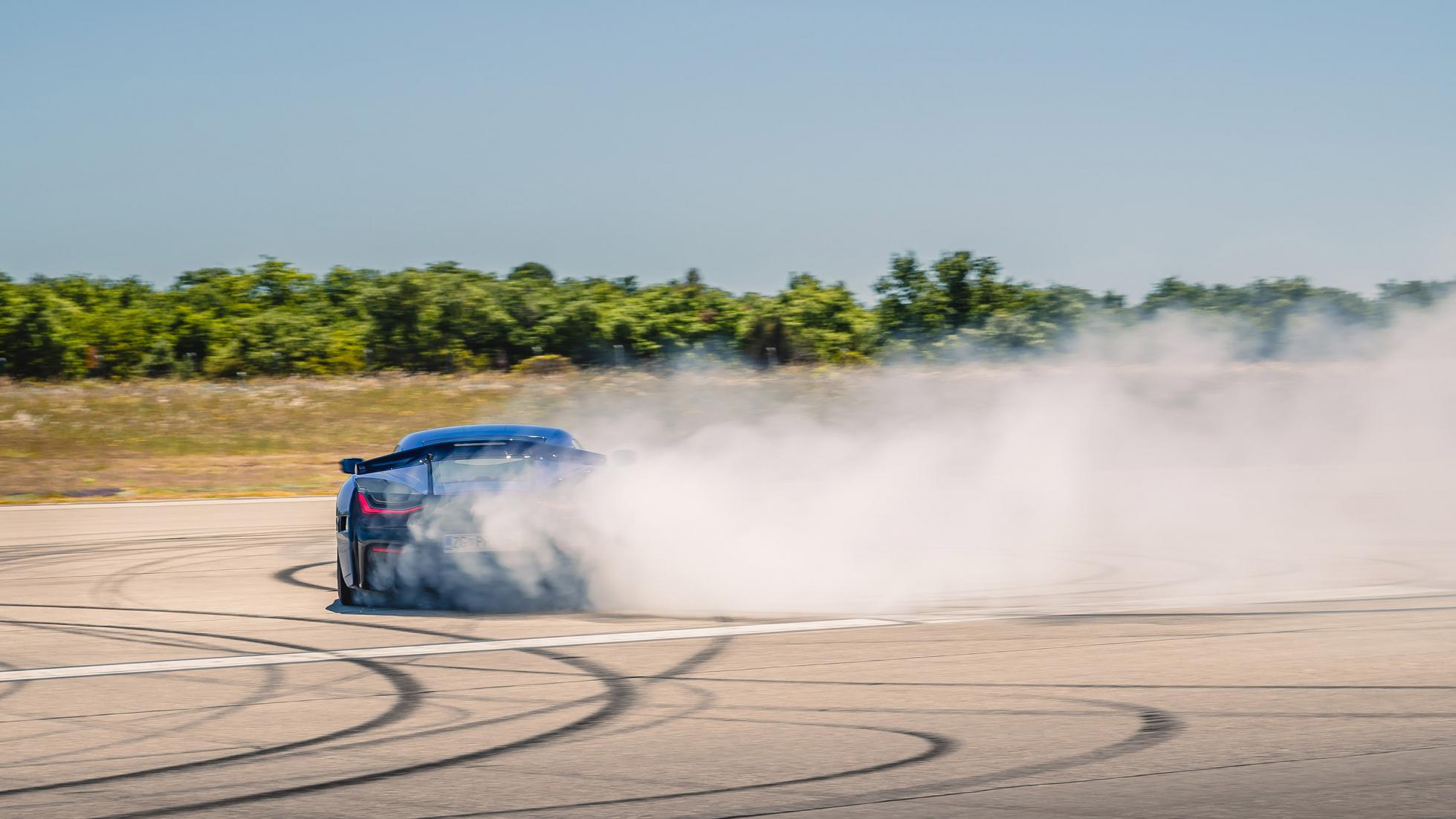
ON THE INSIDE – Layout, finish and space
Rimac has nailed this part, too. Well, mostly. Once again, almost everything is proprietary, from the main infotainment system and all its software to the interior door handles, switchgear and air vents. These are all made from billet aluminium and look great. The steering wheel feels good in your hands and locates the indicators on buttons in Ferrari fashion. There are no column stalks in here.
There are three high-definition TFT screens, running bespoke software and graphics. The main one is configurable, displaying all the info you need plus some stuff you probably don’t but is fun to have: there’s a real time torque display, which shows how much each wheel is coping with, a g-meter, and various other read-outs that are difficult to process on the move.
The central screen handles infotainment, phone, navigation, climate control (the HVAC is the only borrowed component, and comes from the Audi R8), but it’s also where you go to adjust the seats. We’d prefer to have manual adjustment.
Mate Rimac is a self-confessed data fiend so the central screen is also home to the Nevera’s telemetry, which can be downloaded to a laptop or smartphone for review. Mate does this at the runway, and gleefully tells me where I was accelerating most vigorously, what mode I was in, and how much power I used: 1,580bhp apparently.
Rimac has developed its own M2M data system to allow owners to analyse driving performance, metrics and map previews on all the usual platforms, and there will be over-the-air updates as and when. On top of all this, there’s also an AI driver coach, which uses the car’s 12 ultrasonic sensors, 13 cameras, and six radar hooked up to the latest NVIDIA Pegasus operating system to overlay race circuits in real-time to allow drivers to work on the perfect line, and braking and acceleration points. It’s a Rimac spin on the car’s level four autonomy capability. I doubt there’s a more connected hypercar than this.
But it also has its analogue moments. The main drive controller is in billet aluminium, as is the drive mode selector and a third that allows you to adjust the torque load and distribution. Mate says he isn’t happy with their haptics and the action is still a bit clonky. This is a pre-production car, of course, but I’d still take analogue clonkiness over the pervading touchscreen tyranny any day.
OWNING – Running costs and reliability
If you’re signing up for a £1.7m (RM9.7m) electric hypercar, you’ll get its maker’s undivided attention. You’re probably also prepared to go along for the ride: F1 world champion turned self-styled ‘eco entrepreneur’ Nico Rosberg has ordered one. Choose between GT, Signature or Timeless specifications, or more likely go bespoke.
Clients headed to Croatia in the days following TopGear.com to try the pre-series cars we got to experience, and Rimac has established a global dealer network in 19 sites worldwide. The company plans to make 50 cars per year, for the next three years.
Given the focus on its colossal performance, it’s easy to forget that this is a zero-emission (at the tail-pipe) car. After, erm, enjoying ourselves on the test route, we figured we’d better switch to range mode and rein things in a bit to make our destination. But even at a reduced pace, the Nevera is still highly entertaining, a consummate GT. And we made it with 97 kilometres still showing on the range read-out.
Storage space is limited to 100 litres behind the cockpit, above the central battery pack. Soft bags only rather than suitcases.
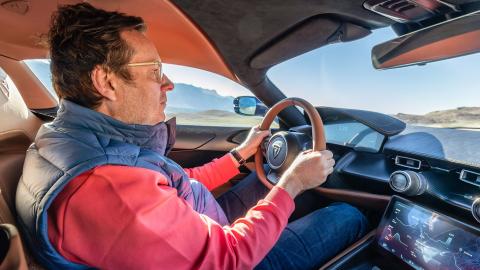
Verdict – Final thoughts and pick of the range
"The first true pure-electric hypercar is a sensation, as is the company that makes it"
There’s a lot to unpack here. This is the first true pure-electric hypercar to land, and there’s definitely a pioneering feel to the Rimac Nevera. This thing’s quarter mile time blitzes the Bugatti Chiron Sport’s and its pace everywhere is intergalactic. But the most powerful ICE cars generate huge character, and it’s their engines and the noise they make that tend to linger longest in the memory. Even the highest of high performance can become… one-dimensional.
But we’re happy to report that the Nevera engages on multiple levels, and transcends the idea that its primary focus is ones, zeroes and algorithms. It feels like a car that’s been engineered and developed by people who aren’t just way ahead of the technological and software curve, they have an innate feeling for the hardware too.
Put all the elements together and you have a car that isn’t just hugely entertaining, it also feels like a genuine milestone. Think of Rimac as a sort of techno Pagani, with as much focus on artistry as artificial intelligence. And remember that the company has a whole load of other stuff going on, too. What a trajectory these guys are on.
